The suspension system is responsible for maintaining the stability, control, and safety of the vehicle during driving. Its function is to maximize the contact of the wheels with the road surface, ensuring stable driving and passenger comfort. This article will discuss the most common suspension systems and the types of suspensions equipped in vehicles.
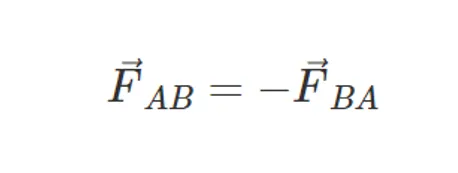
The force exerted by the wheel on the road and the force exerted by the road on the wheel, and consequently on the car, form a pair of action-reaction forces. Suspension systems in vehicles are designed to absorb the energy from this pair of forces, thus reducing the interference of the road surface on the stability, control, and safety of the vehicle. Figure 1 illustrates how these forces interact.
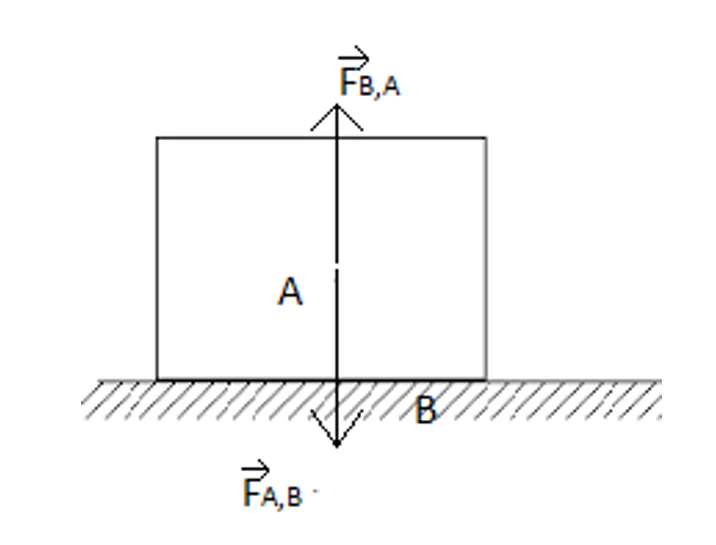
Figure 1 - 3rd Law of Newton - action-reaction force pair
The complexity of suspension system components has increased to meet each manufacturer's technical requirements. This complexity arises from the fact that these systems use electromechanical mechanisms to configure vibration isolation parameters caused by the road surface.
Types of Suspension SystemsThe configuration of these parameters is performed through actuators placed directly on the shock absorbers, called semi-active suspension, or by placing these actuators in parallel with the shock absorbers, called active suspension, altering the suspension stiffness within a certain range of values.
Functioning of Suspension SystemsComparatively, solutions that act directly on the shock absorbers are more commonly used by manufacturers. In addition to design differences, the distinction between active and semi-active suspensions can be made by the mechanisms each one uses to absorb the mechanical energy of the action-reaction force pair.
In the case of active suspension, it has mechanisms capable of reading the piston movement of the shock absorber and, through the actuator, exert a force opposite to the movement with the same intensity, absorbing the mechanical energy in the reaction to the same extent it was exerted in the action. Regarding semi-active suspension, the mechanism works through an actuator that, by subjecting the magnetic field to variations, alters the viscosity of the electromagnetic fluid inside the shock absorbers.
Applications and BenefitsThere are also passive suspension systems, which do not have any actuator that influences suspension stiffness. As mentioned earlier, except for passive suspensions, the rest have the ability to adjust suspension parameters to road conditions and driving style, usually by using comfort or sport mode. This suspension system is mainly used in upper-segment vehicles.
In figures 1, 2, and 3, adapted from the article "Modern suspension systems for automotive vehicles and their test methods," the different types of suspensions can be identified.
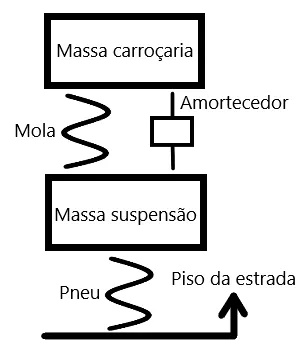
Figure 2 - Passive Suspension
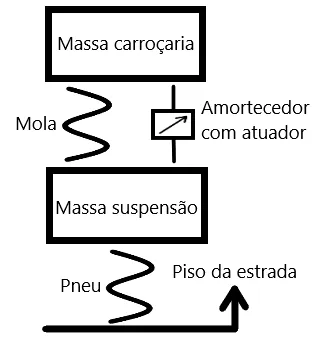
Figure 3 - Semi-active Suspension
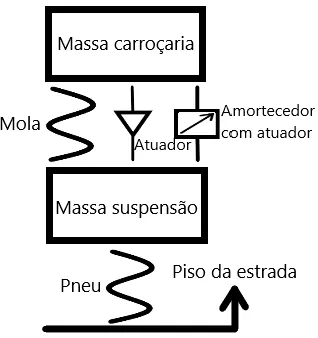
Figure 4 - Active Suspension
Following the aforementioned, the application of different suspension systems significantly affects the parameters, namely their natural frequency. In the case of a passive suspension system, the natural frequency decreases as the body mass (and its additional load) increases. Regarding active and semi-active suspensions, there is also a decrease in natural frequency as the body mass (and its additional load) increases, although not as much as passive suspensions. In Figure 4, adapted from the article "Modern suspension systems for automotive vehicles and their test methods," the behavior of different types of suspensions can be seen.
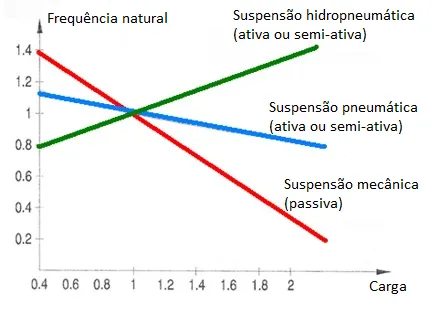
Figure 5 - Variation of natural frequency for different loads and suspension systems
According to the graph in Figure 4, it can be seen that one of the main disadvantages of a passive suspension system is the fact that, as the load increases, the compression of the springs increases, reaching reduced values of natural frequency when the load is maximum. In these cases, the analysis performed in the previous graph also allows observing the behavior of the natural vibration frequency when subjected to a load variation in pneumatic suspensions compared to hydropneumatic suspensions.
Similar to mechanical suspensions, in pneumatic suspensions, the natural frequency decreases with increasing load; however, the reduction in frequency is not significant, less adversely affecting the stability and control of the vehicle. Conversely, hydropneumatic suspensions, although characterized by a lower natural frequency at lower loads, increase their natural frequency as the load increases. Therefore, it can be concluded that in active and semi-active suspension, such as pneumatic and hydropneumatic suspensions, the use of the mechanisms mentioned above allows compensating for the natural vibration frequency of the springs in situations where the load increases, contributing to increased stability and vehicle control.
Types of SuspensionFront Axle
So far, the functioning of suspensions and their design on each wheel has been mentioned; however, vehicles are composed of four wheels, which means that systems can operate independently. Usually, vehicles operate with two wheels connected by the front axle and two wheels by the rear axle, meaning that the vehicle has a certain type of suspension on the front axle and another on the rear axle. Each axle can have dependent or independent suspensions. If the wheels on the front or rear axle are connected by a rigid axle preventing them from moving independently, it is a type of dependent suspension. An independent suspension system allows the wheels to move independently.
Dependent suspensions on the front axle are, for example, used in heavy vehicles, which, in a simplified way, connect the two wheels of the front axle through a solid bar. This type of suspension is not used in light vehicles.
Independent suspensions on the front axle, such as the MacPherson suspension illustrated in Figure 5, allow the wheels to move independently. Developed in the 1940s, the MacPherson strut suspension combines the spring-shock absorber assembly into a single unit and uses only one arm on the bottom of the suspension fixed to the wheel and the vehicle's chassis, making the suspension more compact and lightweight. This type of suspension is used in front-wheel-drive vehicles, especially those built by European manufacturers.
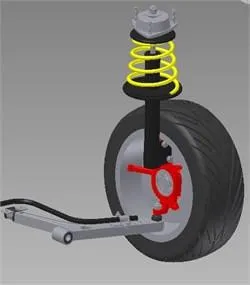
Figure 6 - MacPherson-type Suspension
Regarding independent suspensions of the front axle, the double wishbone suspension uses two suspension arms mounted on the same wheel. Each arm is fixed to the wheel and the chassis and is joined by a spring-shock absorber assembly. This type of suspension allows for greater adaptation of the camber angle, adjusting the wheel position and minimizing body roll, providing a greater sense of consistency in steering. Double wishbone suspensions are more common in larger light vehicles. Figure 6 illustrates a double wishbone suspension.
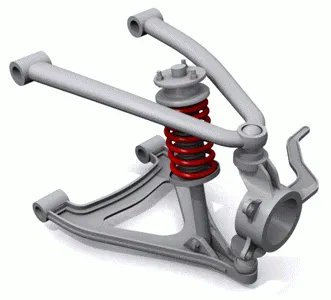
Figure 7 - Double Wishbone Suspension
The suspensions used on the rear axle can also be dependent or independent, depending on whether the two wheels of this axle are connected or not by a rigid axle. In cases where the vehicle is equipped with dependent suspension on the rear axle, the spring-shock absorber assembly can be mounted either as a single unit or as separate components. In the case of separate mounting, the springs can be of smaller size, thus reducing the space used by the suspension.
Regarding independent suspensions on the rear axle, if the vehicle has independent suspensions on both the front and rear axles, then the vehicle is composed of an independent suspension for each wheel. Independent suspensions on the rear axle follow the same principle as independent suspensions on the front axle; however, they are usually more simplified in construction. This simplification in construction is mainly due to the absence of a steering bar that interacts with the wheels in rear axle suspensions.
An example of independent suspension used not only on the rear axle but also on the front axle is the Multilink suspension, which results from the improvement of the double wishbone suspension, combining stability and comfort with reduced cost and versatility. Typically, when this solution is applied, it means that the vehicle is equipped with independent suspension for each wheel.
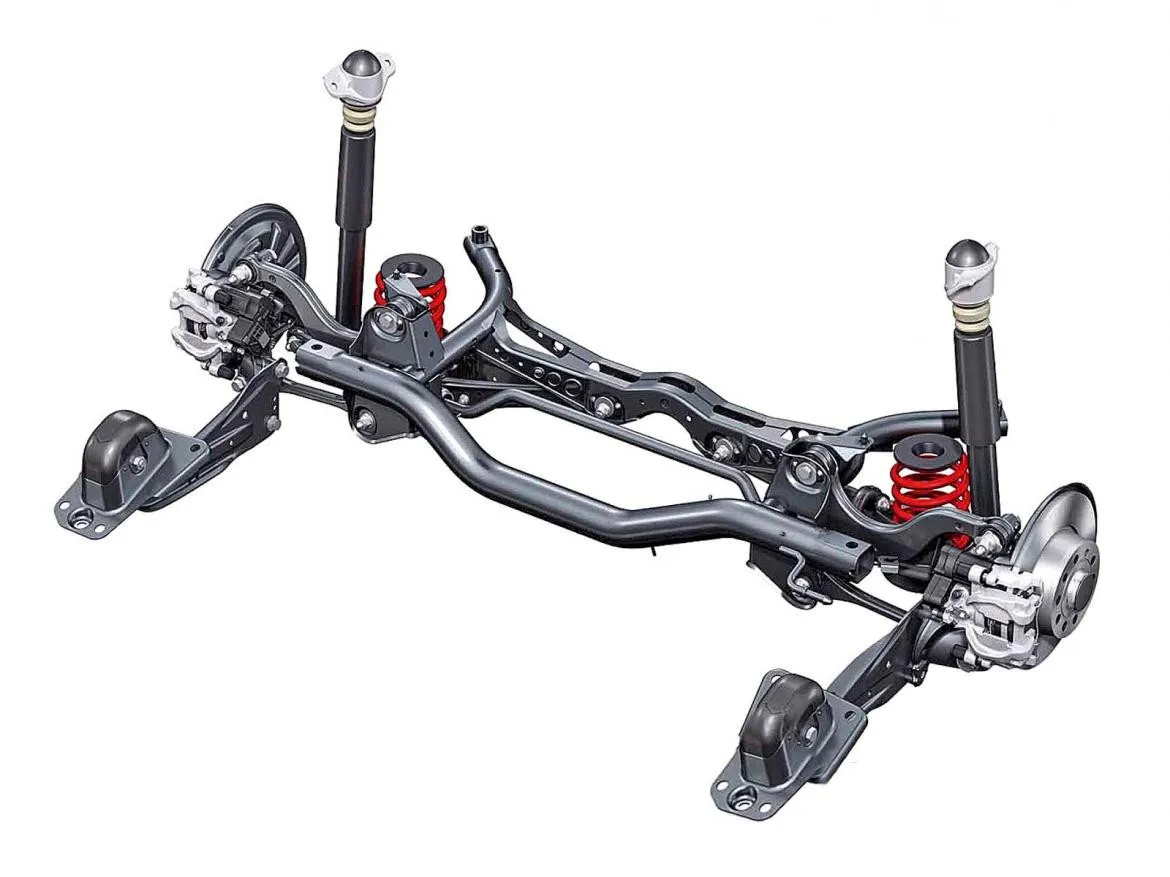
Figure 8 - Multilink Suspension
This analysis allows us to identify the passive independent suspension system as the most used in the automotive industry. This is because it is relatively inexpensive in its design phase and considerably reliable. Alternatively, the active or semi-active suspension system, composed of electrical mechanisms for varying the suspension stiffness, mainly equips upper segment light vehicles due to the additional cost in the design phase.



